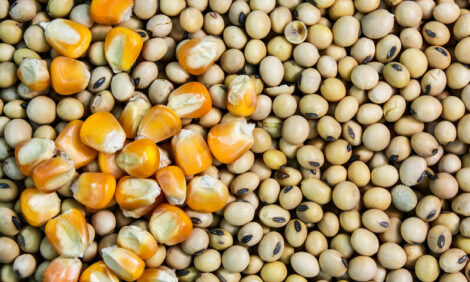



Weekly Outlook: Corn and Soybean Basis Risk
US - For much of 2007 and 2008, corn and soybean basis levels in Illinois and many other producing regions were unusually weak, writes Darrel Good, Extension Economist at the University of Illinois.Problems with lack of convergence of cash and futures prices at delivery markets during periods of futures contract maturity were widespread. Currently, basis levels are quite strong in most markets and convergence appears likely as the March 2009 futures contracts mature.
On 20 February 2008, the average spot cash price of corn at interior country elevators in central Illinois was $.265 under March 2008 futures. On 20 February 2009, the average spot cash price in those same markets was reported at $.11 under March 2009 futures, a level that was typical for this time of year prior to 2007. Similarly, the average spot basis at Illinois River locations North of Peoria was reported at -$0.29 on 20 February 2008 and +$0.01 on 20 February 2009. Basis at central Illinois processing plants was reported at -$0.10 and +$.07 on those two dates, respectively.
The year-over-year change in the soybean basis has been even more dramatic. The average central Illinois spot basis at interior country elevators was -$.58 on 20 February 2008 and -$0.09 on 20 February 2009. The average basis at Illinois River points North of Peoria was -$0.48 and +$.09 on those two dates, respectively. Finally, the average central Illinois processor basis was -$0.42 on 20 February last year and +$0.15 on 20 February this year.
A number of factors may be contributing to the much strong corn and soybean basis levels this year compared to last year. Lower price levels reduce the cost of owning and storing crops and lower fuel prices reduce the cost of transportation. A rapid pace of soybean exports and generally tight holding of both corn and soybeans by producers as prices have declined may also contribute to the strong basis. Improved operating margins for grain merchandisers, as the financial pressure of buying and storing high-priced crops and meeting margin calls on short hedge positions has subsided, may be another contributing factor.
Basis for harvest 2009 delivery of corn and soybean remains generally weak, averaging about -$0.48 and -$0.57 for corn and soybeans, respectively, in central Illinois on 20 February 2009. Weaker new crop bids reflect the lack of urgency to acquire new crop sales from producers and the financial risk of short hedging of new crop purchases.
The strong old crop basis may have marketing implications for producers with unpriced inventory of 2008 crop corn and soybeans. The strong soybean basis and relatively small spread from March 2009 to July 2009 futures imply that the soybean market is offering a very small premium for continuing to store old crop soybeans. Improvement in basis over the next few months is unlikely to cover the cost of storing the soybean crop, with interest costs alone approaching $0.04 per month. Under that scenario, the only potential for a return to storage is through higher futures prices. The soybean market, then, is encouraging producers to sell old crop inventories. Any speculation on higher prices could be accomplished through the purchase of futures contracts or the use of basis contracts. Continuing negative general economic news, stabilization of the South American crop, and prospects for an increase in soybean acreage in the US in 2009 may make a price recovery difficult, however, in the near term.
The corn market shows a little more carry than the soybean market, providing some prospects for a small return to storage if basis remains strong. With reports of unusually large inventories of farmer-owned corn, however, there is risk of a weakening of the basis if farmer sales accelerate rapidly in anticipation of another large crop in 2009. Prospects for the price level of old crop corn are not quite as negative due to an acceleration of export sales, on going increases in ethanol use of corn, and anticipation that the 31 March USDA Prospective Plantings report will reveal intentions to reduce, or at least not increase, corn acreage in the US in 2009.
The weak basis and relatively low futures prices for the 2009 corn and soybean crops are discouraging new crop sales. Futures prices for both crops are also now below the likely spring price guarantee for crop revenue insurance products. Aggressively pricing the 2009 crop at prices below the crop insurance guarantee may not be prudent this early in the season.


